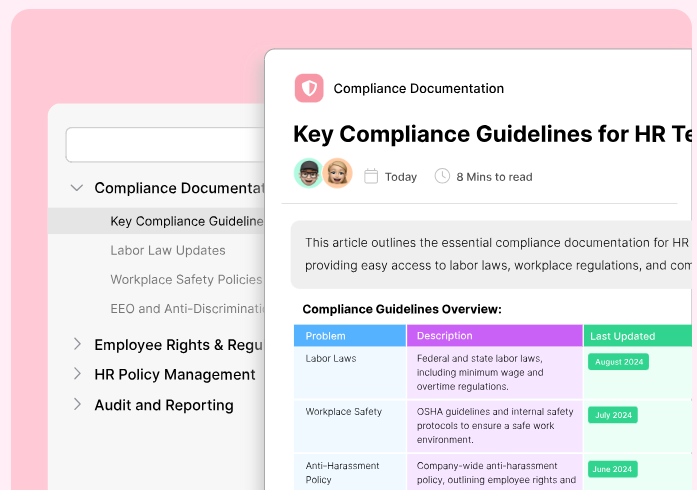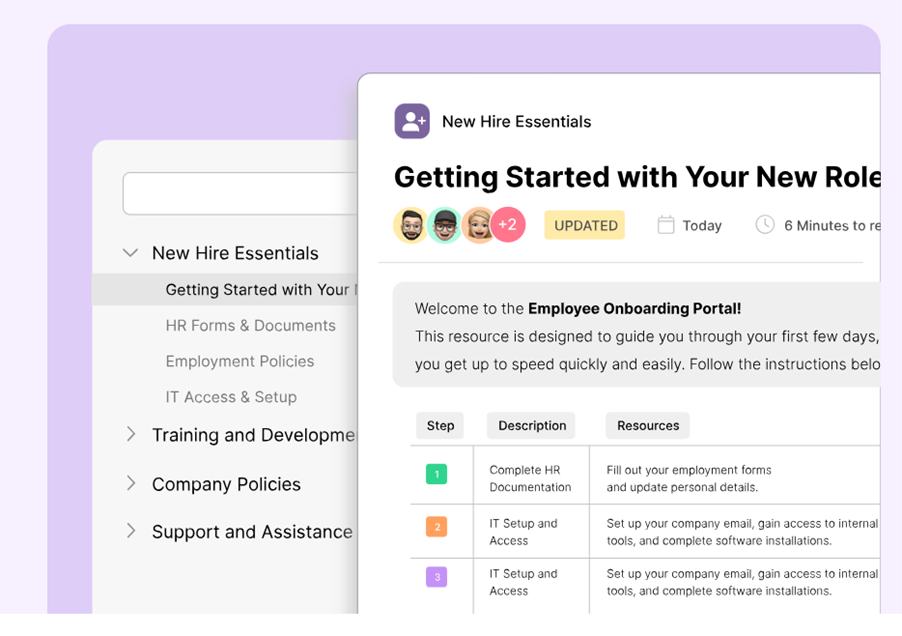What’s something in your company that can’t be replicated? It’s so valuable that some businesses go to great lengths to find out how to build it, and once created, how to retain it as the company grows and more employees join the business.
It’s company culture, the vibrant lifeblood of your company, that makes it different and keeps employees coming back (and new employees wanting to work there). The question is: Can it be documented? We believe the answer is “yes,” using a culture-first employee handbook as your guide to all things company culture.
Alongside an employee handbook, which focuses on the regulations and requirements that employees need to know before working for your company, the culture-first handbook is a more informal document that inducts employees into your company culture.
What is a Culture-First Employee Handbook?
A culture-first employee handbook serves as a guide that explains how your company operates. It explains why your company is unique, how you do things differently, and why employees want to work there.

Instead of requiring employees to slowly get to know your company before becoming a culture-fit, the culture handbook gets them off on the right foot and gives them valuable information that would take weeks or months to learn on their own.
Culture is indefinable, but your culture-first employee handbook brings it to life with engaging copy and captivating stories. Employees can learn about your company’s mission, vision, and values, and understand where the company is at now and where it hopes to be in the future.
That means, from their very first day, new employees can confidently absorb your company’s culture and become productive members of the team. They know exactly what your company values and wants from its employees, and how they can put their best foot forward to contribute to the company’s unique mission.
Why Do You Need a Culture-First Handbook for Employee Onboarding?
Keep employees engaged
A culture-first handbook keeps employees engaged because it shows that your company cares about them. Organizations that invest in their culture are more likely to engage employees and ensure that they look forward to coming to work. A culture-first handbook transmits important values, helping employees learn about what is expected of them and how they can thrive in the business.
Show what the company stands for
An internal employer brand is just as important as how the company is viewed in the marketplace. Employees are internal and external ambassadors of your company, and a company can’t stand for anything if its employees aren’t united under a single vision.
Set clear behavior expectations
Employees can’t thrive in the workplace unless you show them how they should behave. Culture handbooks explain the behavior expectations for successful employees, setting out clear actions and pathways for growth that help employees to thrive in your particular culture.
Reinforce mission and values
Employees do their best work when they understand the company’s mission and values. When you describe these in your culture handbook, employees can apply them in their daily work, helping them achieve results that contribute to the overall success of the business.
Boost employee loyalty
Employees who work at companies with strong cultures are more likely to remain loyal in the long term. More than company perks or salaries, when employees enjoy the place that they work and feel like they are participants in a positive culture, this keeps them coming to work and seeking internal progression rather than looking for opportunities elsewhere.
Overall, a culture-first handbook is an essential tool for transmitting company culture, engaging employees, and communicating mission and values. Although it’s challenging to define what makes your company unique, culture-first handbooks make a significant effort to define and communicate culture to employees, ensuring that you preserve your culture even as your company grows and more employees join your ranks.
Employee Handbook Vs Culture Book: What’s the Difference?
An employee handbook is an essential legal document that defines your company’s policies and expectations and ensures employees know their rights. Compared to a culture book, it’s essentially a dry document that all your employees need to read to understand your company’s rules and their rights.

Source: Example of Kovai.co’s Employee Handbook
A culture book is different. A culture-first handbook tells a story about your company: it’s a creative document designed to engage employees and introduce them to your company’s culture. It includes your company’s driving forces, how it came to be, goals for the future, and positive impact on the world.
An employee handbook might contain information for new hires on how to use technology, for example, or keep information confidential. These are the concrete processes that your organization expects your employees to follow rather than the more intangible nature of culture.
Key Elements to Include in Your Culture-First Handbook
Share the company’s history
How did your company start? What is your origin story? Whether a small startup or multinational organization, there is likely to be a captivating tale about how the founders started the company, and explaining the unique reason for its existence. You can include what the obstacles were in starting the company, and what it was like to work there in the beginning. You can present your origin story to visually illustrate the milestones in the company, leading up to where you are today.
Include core values to guide decisions
Every company has its core values that shape current business practices. In an ideal world, every decision made in the company should align with core values, because your values are what your company lives by every day. Values should be more than just empty words: they should be guideposts that employees can use to do their best work for the company.

Define core principles for daily actions
Core principles are slightly different from values because they guide how employees should approach their work. Core values are a company’s philosophy, while principles govern ways of working that the company most wants to encourage in its employees.

State the company’s goals and mission
Why does the company exist, and what do you want to achieve in the future? Goals and missions are future-oriented statements that define what the company wants to achieve by a certain period of time: be that six months, five years, or thirty years. Being able to understand why your company exists and what the goalposts are provides vital motivation for employees to contribute to your business.
Clarify success expectations for growth
Tell your employees about how you define success in your company. This will be different across every organization. You might value continual growth in skillset, learning from failure, or producing results in every project. Employees who understand success parameters are more likely to flourish in your company and contribute positively to company culture.
Culture in Action: Your Next Step Toward a People-First Workplace
Preserving company culture depends on transmitting it to new employees and embedding it in everything you do. Documenting your culture-first handbook is made easier with knowledge base software like Document360, because you can share your handbook online and keep it updated. Employees can access it anywhere and continually engage with your company’s culture.
Culture-first employee handbooks are like manuals for employees wanting to learn your company’s philosophy and mission, making it simpler to engage with your business and learn the preferred ways of working, right from day one.





 –
– 

